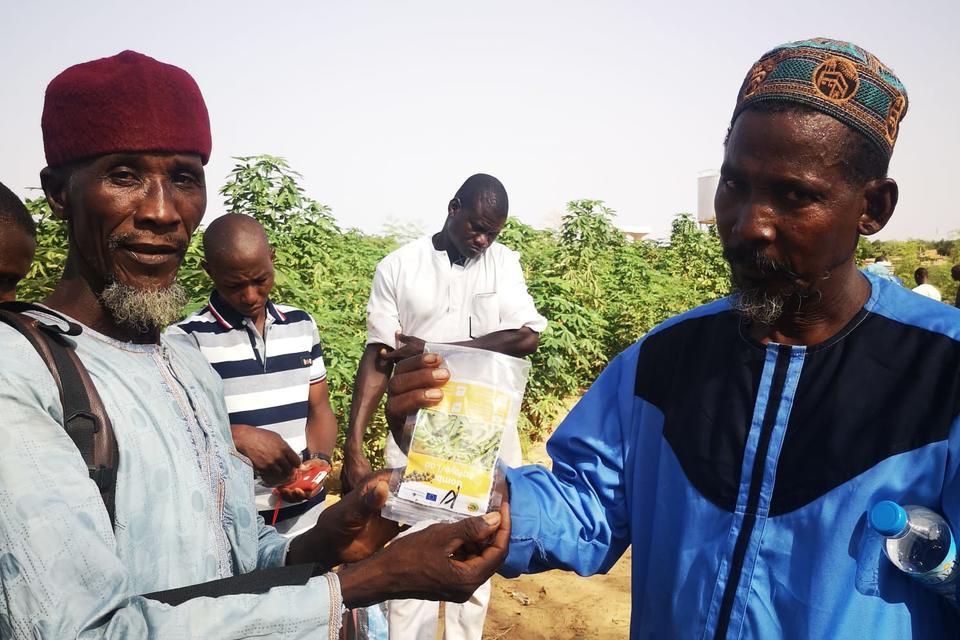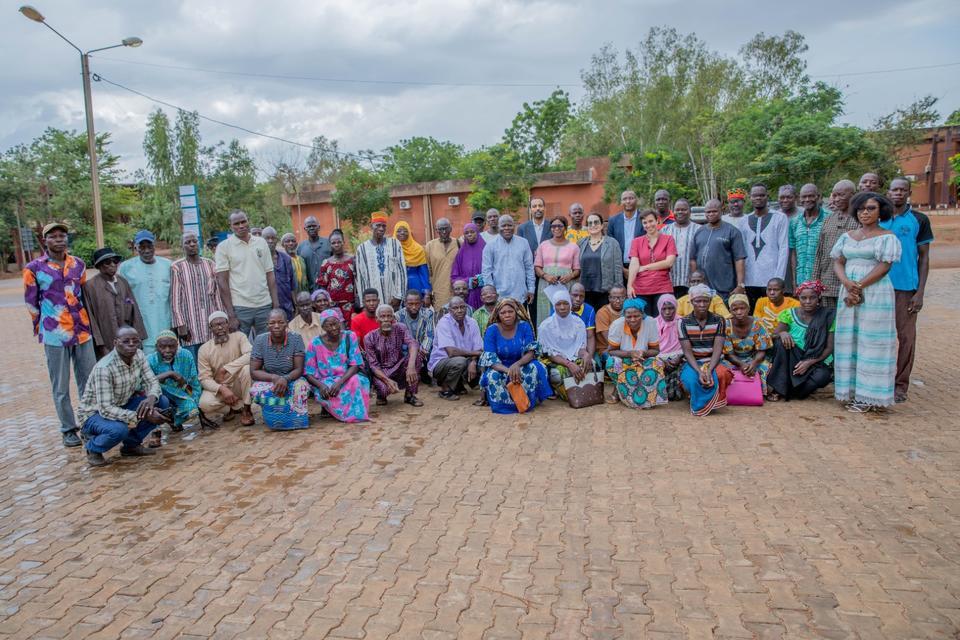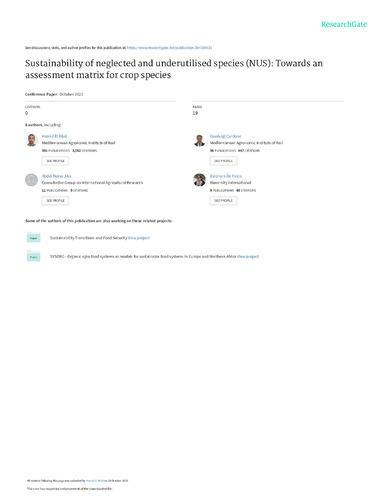From the Field Sowing the seeds of tomorrow, one school garden at a time
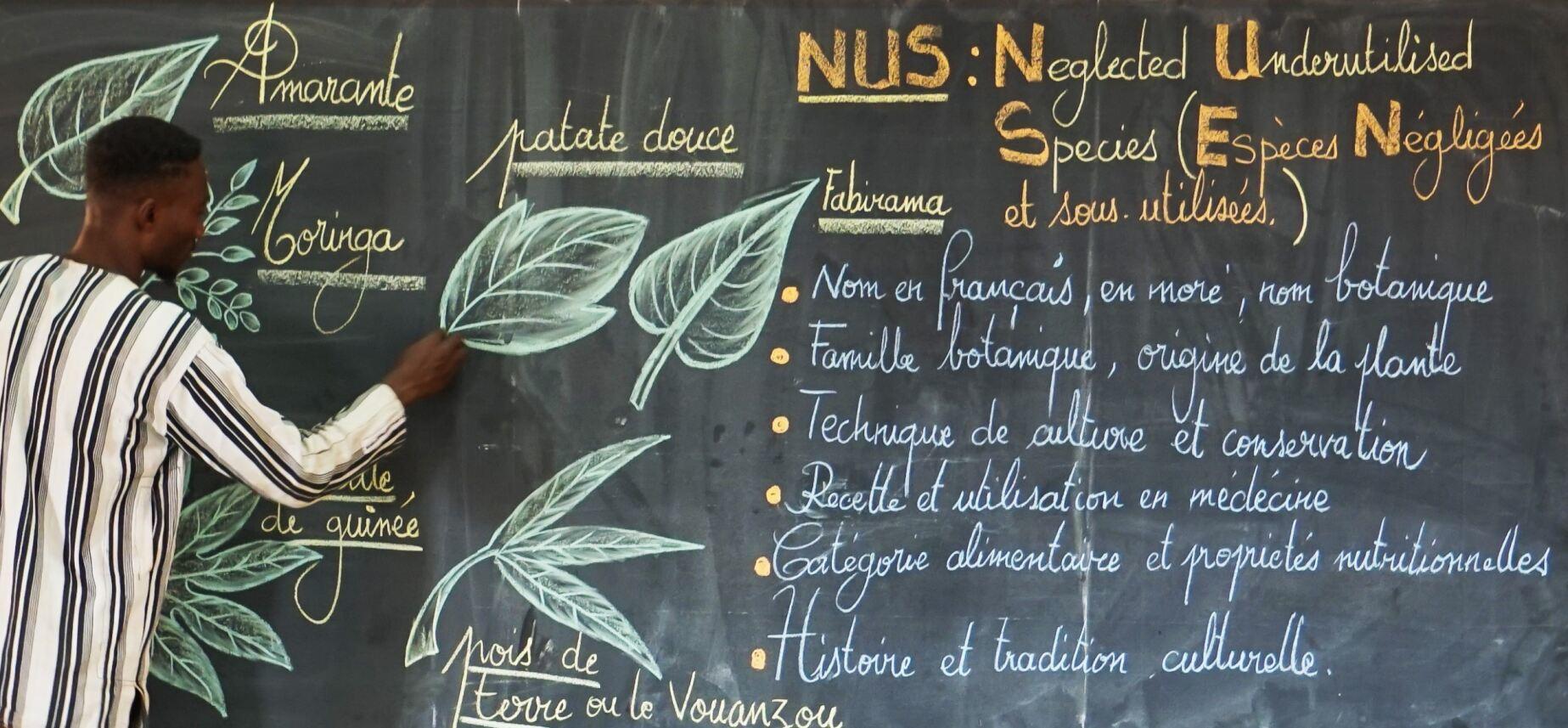
Learn how forgotten foods are making a comeback in Burkina Faso.
By: Teresa Borelli, Flora Tognoli (from Association Watinoma)
It’s 3pm on a hot Wednesday afternoon at the School Complex Marie Immaculée in Ouagadougou. Sixty school children aged 10-12 are gathering at their desks to continue learning about regionally important and nutrient rich neglected and underutilized species (NUS). After learning about roselle and amaranth, today it’s the turn for Bambara groundnut, known locally as voandzou.
Meet the plant: A small leguminous crop, Bambara groundnut is native to West Africa and is rich in complex carbohydrates, plant-based protein, unsaturated fatty acids, and essential minerals (magnesium, iron, zinc, and potassium). Its seeds are harvested underground, much like peanuts, and can be eaten fresh, dried, or ground into flour. Considered a “complete food” due to its balanced macronutrient composition, including it in diets can help reduce protein deficiencies in areas where animal proteins are rare or expensive and where growing conditions are harsh. Bambara groundnut can in fact grow in resource poor soils where other legumes fail, is drought-tolerant and resistant to pests and diseases. As a legume, the crop also fixes atmospheric nitrogen replenishing soil nutrients. Yet, despite its impressive nutritional and agroecological profile, Bambara groundnut has yet to meet its full potential.

Bambara groundnut is not alone in this predicament. Historically a treasure trove of agrobiodiversity (a term encompassing all plants and animals used for food, whether cultivated or collected in the wild), Africa was home to 100 widely distributed edible plant genera, many of which were traditionally grown or harvested for their parts (e.g., seeds, pods, flowers, shoots, stalks, and fruit). As society and agriculture evolved, many of the foods that used to define the continent's diets and identity have disappeared. Many of these foods are now neglected and underutilized, disappearing partly because of soil degradation and habitat destruction, but also due to research and agricultural policy neglect and changing dietary habits. Considered “uncool”, traditional knowledge of growing, collecting, and preparing these 'forgotten foods' is slowly disappearing.
Positive change starts with youth
Dietary diversity in Burkina Faso is generally low, yet NUS offer a sustainable and affordable option for diversifying diets. Raising children’s awareness of the importance of the innumerable properties of NUS is proving to be one of the most valuable tools for ensuring use and knowledge of NUS is kept alive. Youth can be agents of positive change within their families and communities.
''I don't just like this activity, I love it. It gives us a better understanding of our own culture and teaches us a lot about plants. Today I learnt that with this plant (moringa) we can cure several serious diseases". Saïd Steeve Touré, 10 years old.
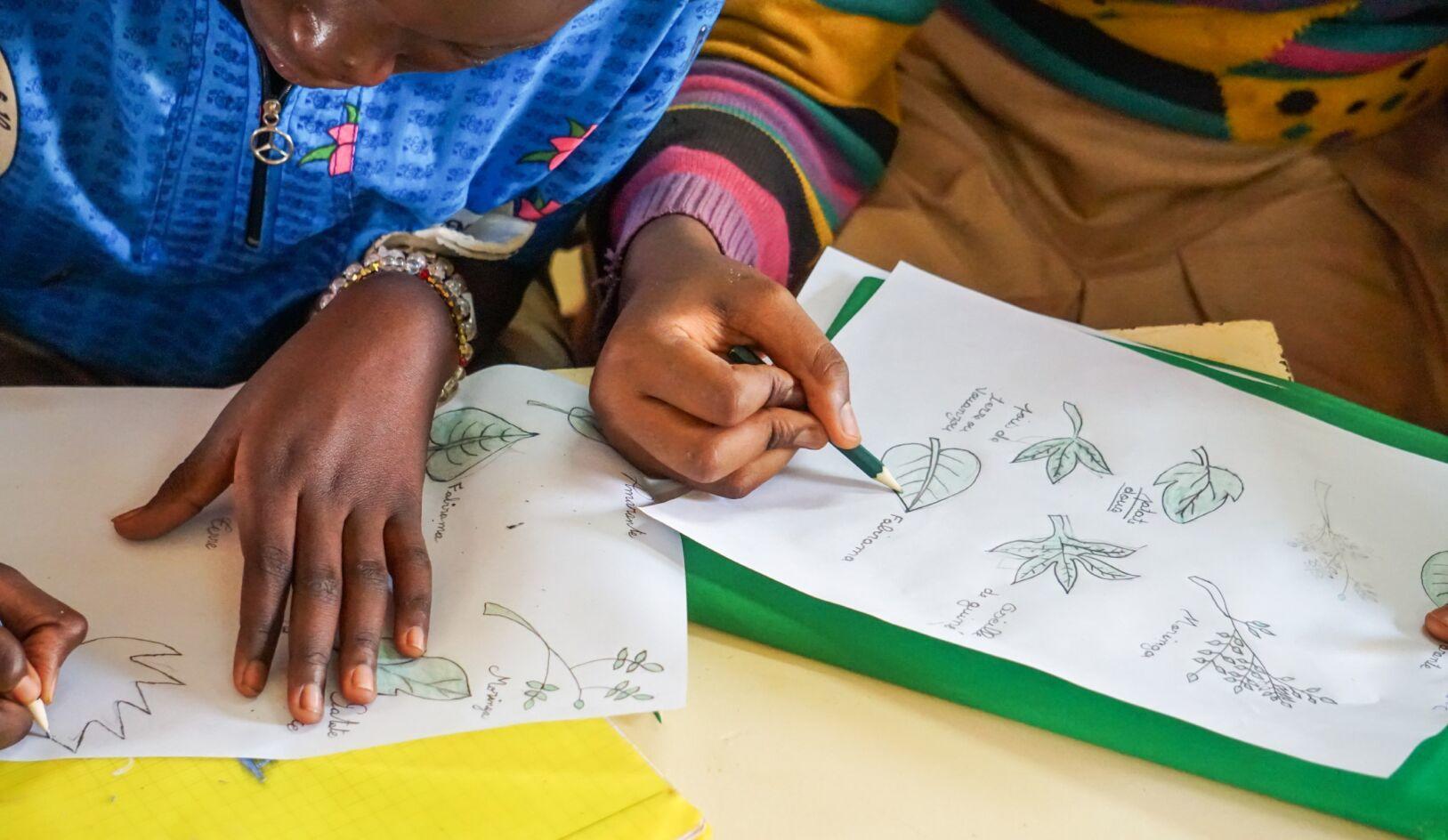
Photo credit: SUSTLIVES/Hyacinthe Combary
With this in mind, in April 2023, the EU-funded SUSTLIVES project piloted the first school-based training module on local NUS at the Association Watinoma school in Koubri. The training, part of the project’s awareness-raising component implemented by the Alliance of Bioversity International and CIAT, was developed and undertaken in collaboration with Association Watinoma, an Italian-Burkinabé non-profit organization that has been operating in the Koubri for many years in close collaboration with local farmers.
The integrated module targeting primary school children (CE1 to CM2) aged 7 to 11, familiarizes the children with local NUS, specifically sweet potatoes, moringa, amaranth, Bambara groundnut and roselle. The module also fosters intergenerational knowledge exchange, whereby children are encouraged to interview grandparents and elders within their communities to learn the lore and traditions associated with these NUS. Quizzes and competitions make learning fun and lessons are complemented with practical, hands-on training in which children are involved in establishing a school garden and they learn to grow and care for NUS.
Successfully implemented in Koubri, Watinoma is now testing the approach in Ouagadougou. Involving 60 students, the course will last 3 months until the end of the school year. A teacher’s training manual to replicate the course in other schools is being drafted and will soon be available for others to use.
"Today we looked at the sweet potato. We learned that it was discovered 6,000 years ago in America. After the theory we had a practical session. We planted sweet potato cuttings. This activity gives us a chance to learn, and if we have friends who don't know how, we can teach them, and they can repeat the same thing at home". Éla Grâce Mariam Palé, 11 years old.
“I like this activity because it teaches me to recognize certain neglected and under-utilized species such as Guinea sorrel, amaranth”. Ifan Zeba, 11 years old.

Photo credit: SUSTLIVES/Hyacinthe Combary
This blog was produced with financial support from the European Union. Its contents are the sole responsibility of the Alliance of Bioversity International and CIAT and do not necessarily reflect the views of the EU, the Italian Agency for Development Cooperation (AICS) or the Mediterranean Agronomic Institute of Bari (CIHEAM Bari).

